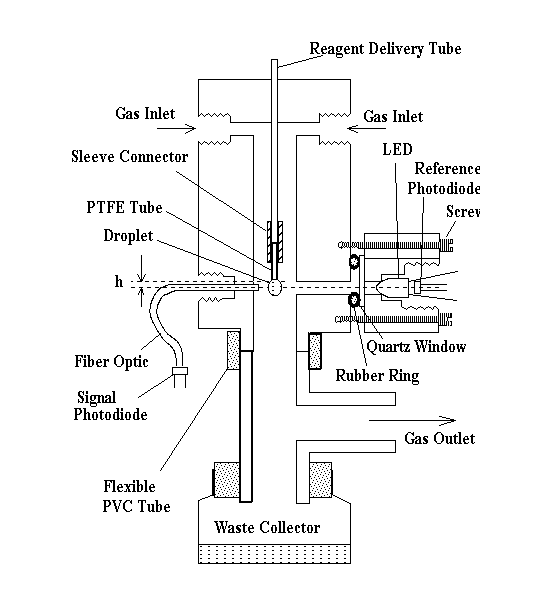
A droplet of a reagent solution is formed at the tip of a tube centered in a cylindrical chamber through which a gas sample is aspirated. The solution is continuously pumped; the drop grows, falls, and another drop grows again. The droplet serves not only as a reproducible collector for the sample gas flowing around it but also as a reactor for a chromogenic reaction and as a windowless optical cell. The design and characteristics of this dynamically growing/falling droplet-based gas sensor system are described; the performance parameters are attractive relative to a static drop. In particular, such systems can be internally calibrated for any humidity effects: at a constant pumping rate, the drop period/frequency is a predictable function of sample relative humidity (RH). The feasibility of the sensor is demonstrated by the fully automated and continuous determination of gaseous chlorine using tetramethylbenzidine (TMB) solution as a chromogenic collection liquid. At levels relevant to industrial hygiene monitoring, an 18 uL droplet based sensor equipped with a light emitting diode (LED) - photodiode based detector shows a relative standard deviation (RSD) of 1.2% (pCl2 ~900 ppbv, drop period 1.1 min.) while the corresponding blank standard deviation is equivalent to ~1 ppbv. There appears to be a great potential for such drop based collectors with in-situ photometric or electrochemical signal transducers as automated sensor devices in biphasic measurements (trace gases, solvent extraction, etc.).

Figure 2. Schematic diagram of the detection unit: h is the vertical distance between the tip of the droplet forming capillary and the centerline of the optical fiber.